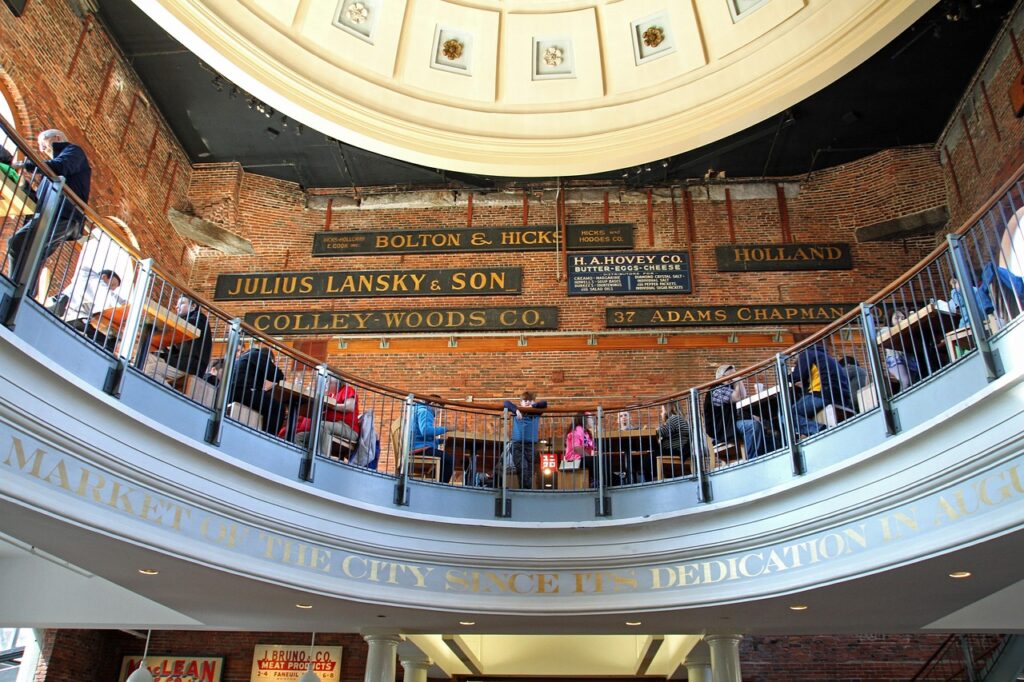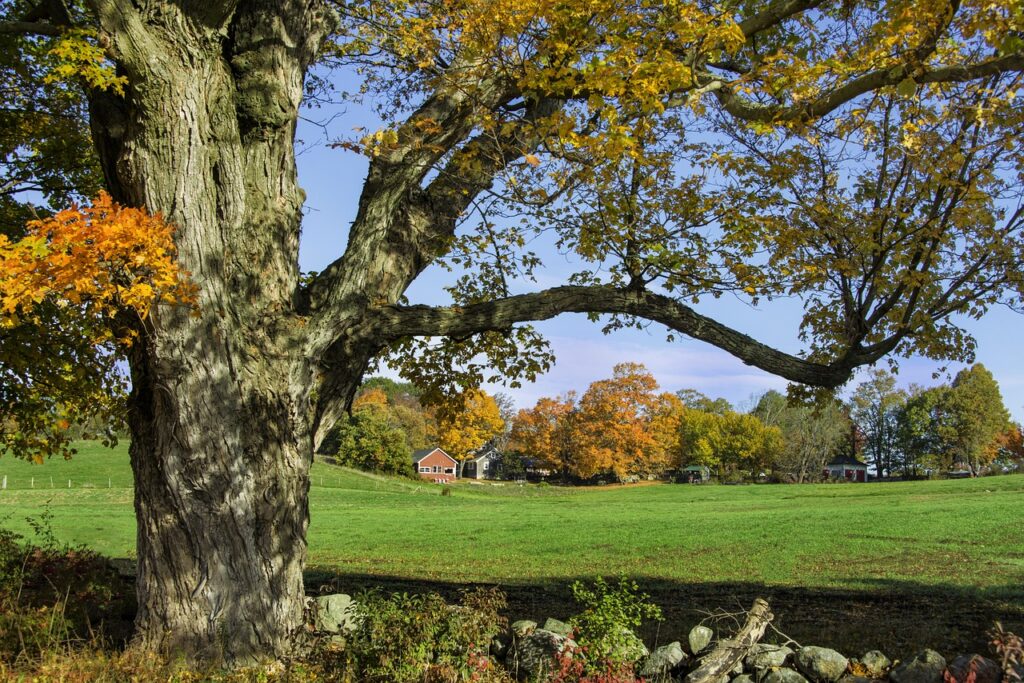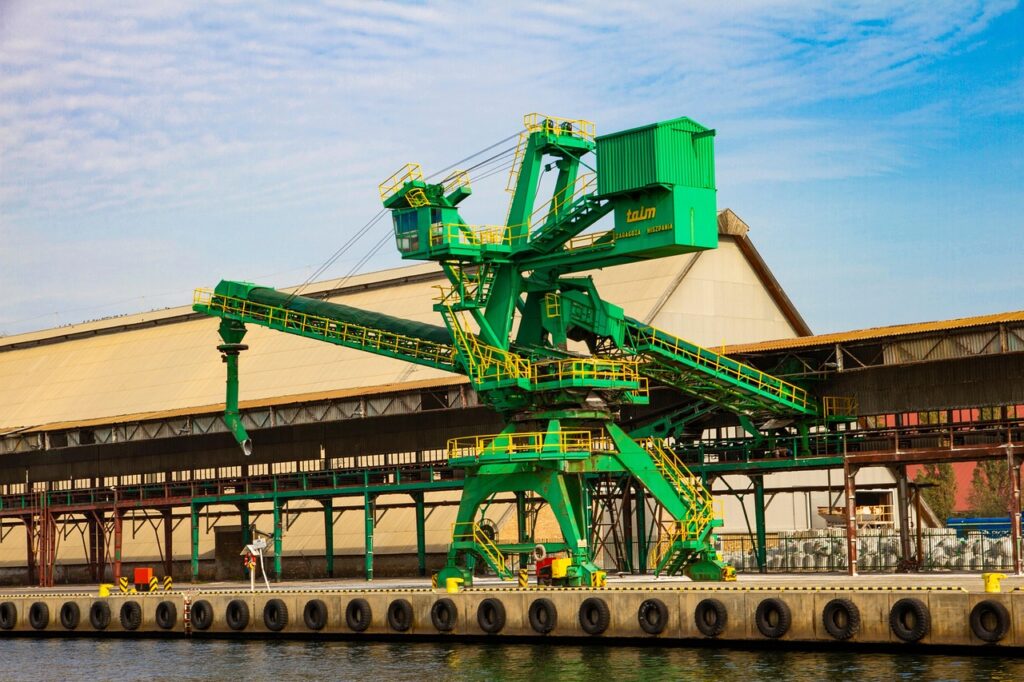
Nestled just south of Boston, the city of Quincy, Massachusetts, is far more than a bustling suburb; it is a venerable cornerstone of American history, a place where legends were forged and innovative ‘firsts’ dramatically altered the nation’s trajectory. From the birthplaces of two U.S. presidents to the site of America’s first commercial railroad, Quincy boasts a heritage so rich and impactful that its story deserves to be told with the reverence usually reserved for the most iconic figures. This is a city that doesn’t just hold history; it actively shaped it.
Indeed, Quincy has earned its distinguished moniker, the “City of Presidents,” a title that hints at its unparalleled contributions to the very fabric of the American experiment. Beyond its illustrious presidential lineage, Quincy pioneered industries, revolutionized education, and even took to the skies in the early days of aviation. Its influence has been far-reaching, a testament to the vision and ingenuity of its residents throughout the centuries.
Join us as we embark on a fascinating journey through time, unearthing the pivotal moments and enduring legacies that make Quincy an undeniable icon among American cities. We’ll celebrate its indelible mark on the nation, remembering the critical figures, groundbreaking achievements, and remarkable spirit that define this truly legendary Massachusetts locale. Prepare to be captivated by the depth and breadth of Quincy’s historical tapestry.

1. **The “City of Presidents” – Birthplace of American Visionaries**Quincy stands proudly as the birthplace of not one, but two U.S. presidents: John Adams, the second president, and his son, John Quincy Adams, the sixth. This remarkable familial legacy alone secures Quincy’s unique and prominent place in American history, marking it as a cradle of leadership and foundational political thought. Adding to this extraordinary roll call is John Hancock, the first signer of the Declaration of Independence and a two-time governor of Massachusetts, further cementing Quincy’s ties to the nation’s very beginnings.
These illustrious figures didn’t just happen to be born here; their upbringing in Quincy undoubtedly shaped their character and their profound commitment to public service. John Adams, a fiery advocate for independence, and John Quincy Adams, a dedicated diplomat and statesman, both carried the spirit of their hometown into the highest offices of the land. Their homes, preserved within the city, serve as tangible links to these pivotal moments in American governance.
The city’s official designation as the “City of Presidents” is more than just a catchy phrase; it’s a deep-seated identity. It speaks to a continuous thread of civic responsibility and intellectual vigor that has characterized Quincy throughout its history. This isn’t just about famous names; it’s about the very environment that nurtured minds capable of leading a nascent nation through its most challenging periods.
Quincy’s proud heritage as the launching pad for such monumental figures continues to resonate today. It’s a city that inspires reflection on leadership, sacrifice, and the enduring principles upon which the United States was founded. The Adams and Hancock legacies are not merely historical footnotes here; they are living reminders of Quincy’s extraordinary contribution to the American story.

2. **From Wilderness to “Merrymount” – Early English Settlements**The very origins of Quincy trace back to 1625, when Captain Richard Wollaston led a party to establish an English post on a low hill near the south shore of Quincy Bay. This initial settlement, named Mount Wollaston, found the area remarkably suitable for farming, largely due to the land already being cleared by the Massachusett sachem Chickatawbut and his group, who knew the area as Passonagessit. This early interaction with the indigenous landscape set the stage for future colonial endeavors.
Upon Wollaston’s departure for Virginia, leadership of the post fell to Thomas Morton, whose unconventional practices and free-thinking ideals soon put him at odds with the conservative Plymouth settlement. Morton famously renamed the settlement Ma-re-Mount, or “Hill by the Sea,” declaring that the Pilgrims were “threatening to make it a woefull mount and not a merry mount.” His colony gained a reputation for its libertine spirit, reportedly involving debauchery with Indian women and drunkenness, which further inflamed tensions with its puritanical neighbors.
This clash of cultures and ideologies led to Morton’s arrest by Myles Standish in 1627, marking a dramatic episode in early colonial history. Though Morton was sent back to England, he later returned only to be arrested again by Puritans the following year. The area’s colorful past is still celebrated today, with the modern neighborhood of Merrymount taking its name directly from Morton’s punning moniker, preserving a slice of rebellious colonial history within Quincy’s bounds.
This vibrant, if contentious, beginning highlights the diverse visions for early American society. Quincy’s foundational story is not just one of simple settlement, but a compelling narrative of conflicting ideals, economic aspirations, and the challenging realities of establishing a new society in an already inhabited land. It’s a powerful reminder of the complex tapestry of New England’s early days.
3. **The Granite Railway – America’s First Commercial Rail**Quincy etched its name into the annals of American industrial history with the construction of the Granite Railway in 1826, proudly boasting the title of the first commercial railroad in the United States. This remarkable feat of engineering was not merely a local convenience; it was a groundbreaking innovation that demonstrated the immense potential of rail transport for commerce and infrastructure development across the burgeoning nation. Its very existence was a bold declaration of American ingenuity.
The railway’s primary purpose was both ambitious and practical: to efficiently transport the world-renowned Quincy granite from its prolific quarries to the Neponset River in Milton. From there, the massive stone blocks could be loaded onto boats and shipped to Charlestown, where they were destined to become part of the iconic Bunker Hill Monument. This monumental construction project underscored the immediate need for advanced transportation solutions, and Quincy delivered.
This pioneering railway represented a significant leap forward in logistical capabilities, facilitating the movement of heavy materials on an unprecedented scale for its time. It showcased Quincy not just as a source of high-quality building materials, but as a hub of mechanical and entrepreneurial foresight. The successful operation of the Granite Railway inspired similar projects and contributed significantly to the growing understanding of railroads as vital arteries for economic growth.
Indeed, the Granite Railway’s success made “Quincy granite famous throughout the nation,” transforming the city into a recognized industrial powerhouse. The tracks, though no longer active for their original purpose, laid down more than just stone; they laid the groundwork for America’s vast railroad network and remain a testament to Quincy’s role as a true pioneer in the age of commercial transportation.
4. **The Mighty Granite Quarrying Industry**For over a century, Quincy’s landscape and economy were profoundly shaped by its thriving granite quarrying industry. The city’s subterranean wealth, particularly its high-quality granite, became a defining characteristic, drawing laborers and entrepreneurs and establishing Quincy as a prominent industrial center. This enduring industry was more than just a source of revenue; it was the heartbeat of the community, shaping lives and building structures far beyond the city limits.
As the industry boomed, “stonecutting became the city’s principal economic activity,” creating a skilled workforce and a unique industrial identity. The demand for Quincy granite was immense, used in everything from monumental structures like the Bunker Hill Monument to countless buildings, bridges, and municipal works across the country. The sheer scale of extraction and craftsmanship was a testament to human endeavor and geological bounty.
The legacy of this powerful industry is visibly preserved today in the Quincy Quarries Reservation. These former quarries, now a protected space, offer a striking visual reminder of the colossal scale of operations that once dominated the area. They stand as silent sentinels, echoing the sounds of picks, drills, and the rumble of granite being moved, a vivid testament to an era when rock was king.
The granite industry didn’t just provide jobs; it fostered a rugged determination and a reputation for quality that became synonymous with Quincy itself. It’s a powerful narrative of how natural resources can fuel an entire community’s growth and ambition, leaving an indelible mark on its cultural and economic heritage for generations to come.
5. **Fore River Shipyard – A Naval Powerhouse**Beyond granite, Quincy forged another formidable industrial identity as a shipbuilding center, with the Fore River Shipyard emerging as a national powerhouse in the 1880s. This sprawling yard, founded by Thomas A. Watson — famously Alexander Graham Bell’s assistant in developing the telephone — became synonymous with the construction of some of the most iconic and powerful warships in American naval history. It was a place where steel met the sea, crafting the sinews of national defense.
The impressive list of vessels launched from Fore River is a testament to its unparalleled capability. “Many famous warships were built at the Fore River Shipyard,” including the formidable aircraft carrier USS Lexington (CV-2), the mighty battleships USS Massachusetts (BB-59) and USS Nevada (BB-36), and the world’s last all-gun heavy warship, USS Salem (CA-139). Each ship represented a pinnacle of naval engineering and played a critical role in global conflicts.
Notably, the legacies of some of these vessels continue to grace our shores today. The USS Massachusetts is preserved as a museum ship at Battleship Cove, while the USS Salem remains at Fore River as the main exhibit of the United States Naval Shipbuilding Museum, a profound connection to Quincy’s maritime heritage. These floating monuments allow visitors to step aboard a piece of Quincy’s glorious past and experience the scale of its wartime contributions.
Adding a touch of intriguing Americana, James J. Kilroy, the reputed originator of the famous ‘Kilroy was here’ graffiti, was a rivet inspector at the Fore River Shipyard. This tidbit perfectly encapsulates the human stories woven into Quincy’s industrial might. The shipyard was not just a facility; it was a crucible of innovation, a bastion of skilled labor, and a vital contributor to the nation’s strength at sea.

6. **The Quincy Method – A Revolution in Education**In the 1870s, Quincy became an unexpected epicenter of educational reform, thanks to the pioneering efforts of Francis W. Parker, who developed the highly influential “Quincy Method” during his tenure as the city’s superintendent of schools. Parker, an early and fervent proponent of progressive education, refused to accept stagnant curricula and traditional rote learning, believing that a more child-centered approach could unlock greater potential in students. His vision was nothing short of revolutionary for its time.
Parker put his transformative ideas directly into practice within Quincy’s underperforming schools, challenging conventional wisdom and introducing innovative teaching techniques. He emphasized critical thinking, hands-on learning, and a holistic development of the child, moving away from rigid disciplinary methods towards a more engaging and empathetic educational environment. It was a bold experiment, driven by a deep conviction in the power of enlightened pedagogy.
The results of Parker’s groundbreaking approach were nothing short of spectacular. Just “four years later, a state survey found that Quincy’s students were excelling.” They demonstrated remarkable improvements not only in fundamental skills like reading, writing, and spelling, but also ranked an impressive fourth in their county in mathematics. This clear evidence of success rapidly validated the effectiveness of the Quincy Method, turning skeptics into admirers.
The influence of the Quincy Method transcended local borders, spreading rapidly as “many of Quincy’s teachers were recruited by districts in other states.” This intellectual diaspora carried Parker’s progressive philosophy “beyond Massachusetts to New Jersey, New York, Connecticut, Vermont, Florida, Minnesota, and other places,” fundamentally reshaping educational practices across the nation. Quincy, therefore, wasn’t just building great students; it was building a better future for American education.
Read more about: The Astonishing Journey: Unearthing the Centuries-Old History of Your Favorite Fast Food Chains

7. **Aviation’s Early Chapters – Dennison Field and Squantum Naval Air Station**Quincy also played a pivotal role in the thrilling early days of aviation, largely thanks to Dennison Field, located in Squantum. This historic site holds the distinction of being “one of the world’s first airports,” an aerial proving ground where the nascent technology of flight took some of its most important early strides. It was a place where dreams of flight truly took off, shaping the future of air travel and defense.
In 1910, Dennison Field hosted the iconic Harvard Aero Meet, an event of immense national significance as “the second air show in America.” This spectacular display of aerial prowess captivated audiences and further fueled public fascination with aviation. The field also boasts a connection to the legendary Amelia Earhart, who was partially involved in its development, linking Quincy to one of history’s most celebrated aviators.
The strategic importance of the location quickly became apparent, leading the field to be leased to the Navy for an airfield. It subsequently served as a “reserve Squantum Naval Air Station into the 1950s,” playing a crucial role in national defense. Beyond the Navy, the Army also maintained a long-standing presence in the city, with the Massachusetts Army National Guard occupying the Kelley Armory in Wollaston, further underscoring Quincy’s military contributions.
Today, the site where Dennison Field once buzzed with early aircraft is known as Squantum Point Park. This beautiful waterfront area serves as a tranquil reminder of Quincy’s pioneering spirit in aviation. From hosting groundbreaking air shows to serving as a vital military base, Quincy’s contributions to the development of flight are an impressive, high-flying chapter in its storied history.
Having explored Quincy’s foundational role in American history, from its presidential lineage to its industrial and educational ‘firsts,’ we now turn our gaze to the city’s evolving identity. This next chapter delves into how Quincy has adapted and thrived, showcasing its pivotal contributions to 20th-century commerce and public safety, embracing its vibrant modern demographics, and celebrating its unique cultural and geographical landmarks. The story of Quincy is one of continuous reinvention and enduring influence, a testament to its dynamic spirit.
8. **Quincy’s Commercial Legacy: Birthplace of American Icons**Beyond its heavy industries, Quincy also holds a distinctive place in the annals of 20th-century American commerce, serving as the unlikely birthplace for two iconic restaurant chains that would go on to define aspects of national roadside culture and daily routines. This pioneering spirit in entrepreneurship underscores Quincy’s diverse economic contributions and its role as a hub of innovation.
The city proudly claims the origin of Howard Johnson’s, a name synonymous with American travel and hospitality for decades. While the context provides its founding here, it’s clear that Quincy provided the fertile ground for this establishment to blossom into a widespread phenomenon, shaping the nascent fast-food and family dining landscape and becoming a beloved fixture for generations of travelers.
Even more deeply ingrained in daily life, Dunkin’ Donuts, now a global coffee and baked goods giant, also began its journey in Quincy. From its humble beginnings in this Massachusetts city, Dunkin’ Donuts grew exponentially, transforming morning commutes and coffee breaks across the nation and beyond. Quincy’s ability to foster such widespread commercial success speaks volumes about its economic dynamism and the enduring entrepreneurial drive of its residents.

9. **A Diverse and Growing Metropolis: Quincy’s Modern Demographics**Quincy’s identity has evolved significantly, particularly in its population and cultural makeup, marking a shift from its industrial past to a vibrant, diverse urban center. With a population reaching 101,636 in 2020, Quincy stands as the seventh-largest city in Massachusetts, a remarkable growth that reflects its ongoing appeal and dynamism.
The city has become a compelling destination, flourishing as “both a vibrant immigrant destination and a suburban business hub.” Its attractiveness is rooted in a combination of factors, including its established safety, a relatively large housing stock that accommodates its growing populace, and extensive connections to Boston. This blend makes Quincy a magnet for new residents and businesses alike, fostering a rich tapestry of community.
Throughout its history, Quincy has experienced continuous population growth, with particularly significant increases in the 1920s and another notable rise in recent decades. The city’s demographic landscape continues to be shaped by this influx, leading to a truly multicultural environment where numerous languages are spoken, enriching the social fabric and contributing to its vibrant, modern identity.

10. **Pioneering Public Safety: The Quincy Police Department’s Narcan Program**Quincy’s commitment to public welfare extends to its innovative approaches in public safety, demonstrated by the forward-thinking initiatives of its police department. Established in 1888, the Quincy Police Department has continued to adapt to contemporary challenges, earning national recognition for its groundbreaking programs.
In a crucial response to the opioid epidemic, Quincy became “the first in the US to have its police department carry the nasal spray Narcan (Nalaxone)” in 2010. This bold decision positioned Quincy at the forefront of a nationwide effort to combat the devastating effects of opioid overdose, marking a significant shift in emergency response protocols and saving countless lives within the community.
The impact of this pioneering program was immediate and profound. Initially, Quincy officers were reviving an overdose victim approximately “every four to five days,” and by 2014, they had administered the opioid antagonist “over 300 times.” This clear success led other cities and police departments across the United States to develop similar Narcan-dispensing programs, directly modeling their efforts on Quincy’s proven approach, thereby cementing the city’s legacy as a leader in public health and safety innovation.
11. **Quincy’s Asian Community: A Vibrant Cultural Tapestry**Among the most striking aspects of Quincy’s modern identity is its thriving Asian community, which has transformed the city into a significant center for Asian American culture and commerce in Massachusetts. By 2010, Quincy boasted the “highest per capita concentration of persons of Asian origin in Massachusetts,” a testament to its welcoming environment and economic opportunities.
The community is remarkably diverse, primarily comprising ethnic Chinese residents, many originating from Hong Kong, Taiwan, and Fujian, alongside growing Vietnamese and East Indian populations. This rich mix is reflected in the dramatic increase in Asian residents, from a mere 750 in 1980 to 22,174 in 2010, marking a 64% increase in a single decade for the overall Asian population.
Historically, the city faced challenges, with “unrest due to racial tensions and violence directed toward Southeast Asian and Chinese residents” in the 1980s. However, Quincy has made substantial progress, with the Police Department prioritizing diversification and community outreach, and organizations like Quincy Asian Resources Inc. and Boston Chinatown Neighborhood Center providing vital services. These efforts have helped to foster greater integration and trust, showcasing Quincy’s dedication to its multicultural fabric.
Economically, the Asian community is robust, with a high rate of homeownership among Chinese residents and the establishment of culturally significant businesses, such as the Kam Man Food supermarket in 2003. This vibrant presence of diverse Asian cultures contributes immeasurably to Quincy’s unique character, making it a truly cosmopolitan and dynamic city.
12. **Natural Beauty and Urban Green Spaces: Quincy’s Geographical Landmarks**Beyond its historical and industrial achievements, Quincy is blessed with a wealth of natural beauty and an impressive array of geographical landmarks, offering residents and visitors alike a harmonious blend of urban living and accessible green spaces. Its strategic location along Quincy Bay, part of Boston Harbor, grants it extensive waterfront access and stunning vistas.
Prominent among its natural attractions is Wollaston Beach, situated along Quincy Shore Drive. Revered as “the largest Boston Harbor beach,” it provides a vital recreational escape and a picturesque stretch of coastline for community enjoyment. The city’s maritime domain also includes several islands within the Boston Harbor Islands National Recreation Area, such as Hangman Island, Moon Island, Nut Island (now a peninsula), and Raccoon Island, each contributing to the region’s ecological and scenic diversity.
A significant portion of Quincy’s land—”fully 23 percent of its land area”—is preserved within the uninhabited Blue Hills Reservation. This expansive state park, managed by the Massachusetts Department of Conservation and Recreation, encompasses the city’s southwestern portion and is home to its highest point, the 517-foot Chickatawbut Hill. The reservation, along with other local hills like Forbes Hill, Presidents Hill, and Penns Hill, offers crucial natural habitats and recreational opportunities, affirming Quincy’s commitment to environmental preservation.
The city’s design further integrates these natural assets with urban life through its parkways. Furnace Brook Parkway gracefully traverses the city to Quincy Bay, where it connects with Quincy Shore Drive, linking residential areas to the waterfront. These scenic routes not only facilitate movement but also serve as green corridors, enhancing the quality of life and underscoring Quincy’s appreciation for its rich natural landscape.

13. **Local Governance and Community Institutions: A Look at Quincy’s Civic Life**Quincy’s civic life is characterized by a robust framework of local governance and deeply embedded community institutions that cater to the needs and aspirations of its residents. The city operates under a strong mayor government, with mayoral terms extended to four years since 2015, reflecting a commitment to stable leadership and long-term vision.
Alongside the mayor, a nine-member city council, comprising six ward representatives and three at-large members, ensures diverse representation in municipal decision-making. The commitment to public service extends to education, with a seven-member school committee overseeing the city’s public schools, further demonstrating a comprehensive approach to local administration.
Beyond government, Quincy boasts a unique and cherished cultural institution: “the United States’ longest-running Flag Day parade,” a tradition that commenced in 1952. This annual event is a powerful symbol of community pride and patriotic spirit, bringing residents together in a vibrant display of collective identity. Such traditions underscore the strong sense of belonging and shared heritage within Quincy.
Furthermore, the Thomas Crane Public Library serves as the “flagship library” for the city, providing essential resources and fostering intellectual engagement. Complementing formal education, various community organizations have historically offered supplementary education, including Chinese language schools, reflecting the city’s dedication to cultural preservation and lifelong learning within its diverse populace.

14. **Quincy’s Enduring Educational Landscape: From Progressive Methods to Community Colleges**Quincy’s legacy as a pioneer in education, established with the “Quincy Method” in the 1870s, continues to shape its dynamic and diverse educational landscape today. The city offers a comprehensive array of learning opportunities, from early childhood to higher education, reflecting a sustained commitment to intellectual growth and community development.
Central to its higher education offerings is Quincy College, a public community college that stands out for its unique governance structure. It is proudly “the only one of Massachusetts’ 16 community colleges to be run by a city rather than by the state,” making it one of only two colleges organized this way in the entire United States. This distinctive arrangement underscores Quincy’s direct investment in accessible local education.
While Eastern Nazarene College, a private liberal arts institution with a history stretching back to 1900 and a relocation to Quincy in 1919, is currently preparing for closure, its presence for over a century has contributed significantly to the city’s academic environment. This transition highlights the evolving nature of higher education and the need for communities to adapt and support new learning models.
Below the collegiate level, Quincy Public Schools manage an extensive system, including two public high schools, five middle schools, and twelve elementary schools. This robust public system provides foundational learning for the majority of the city’s youth, building upon the progressive educational principles that once made Quincy famous across the nation.
Additionally, Quincy provides a range of private and alternative educational institutions, such as Catholic parochial schools now merged into the Quincy Catholic Academy, the independent Woodward School for Girls offering college-preparatory education, and the Adams Montessori School. This rich tapestry of educational choices ensures that families have diverse options, catering to various pedagogical philosophies and further solidifying Quincy’s reputation as a city dedicated to learning at every stage of life.
From its presidential birthplaces to its innovative industries, its groundbreaking educational reforms to its diverse modern communities, Quincy, Massachusetts, stands as a vibrant testament to American progress and endurance. It is a city that not only honors its profound past but actively shapes its future, continuously evolving while retaining the unique spirit that has defined it for centuries. Quincy’s story is an inspiring narrative of resilience, innovation, and community, an icon in its own right, ever-remembered and always forging ahead.









